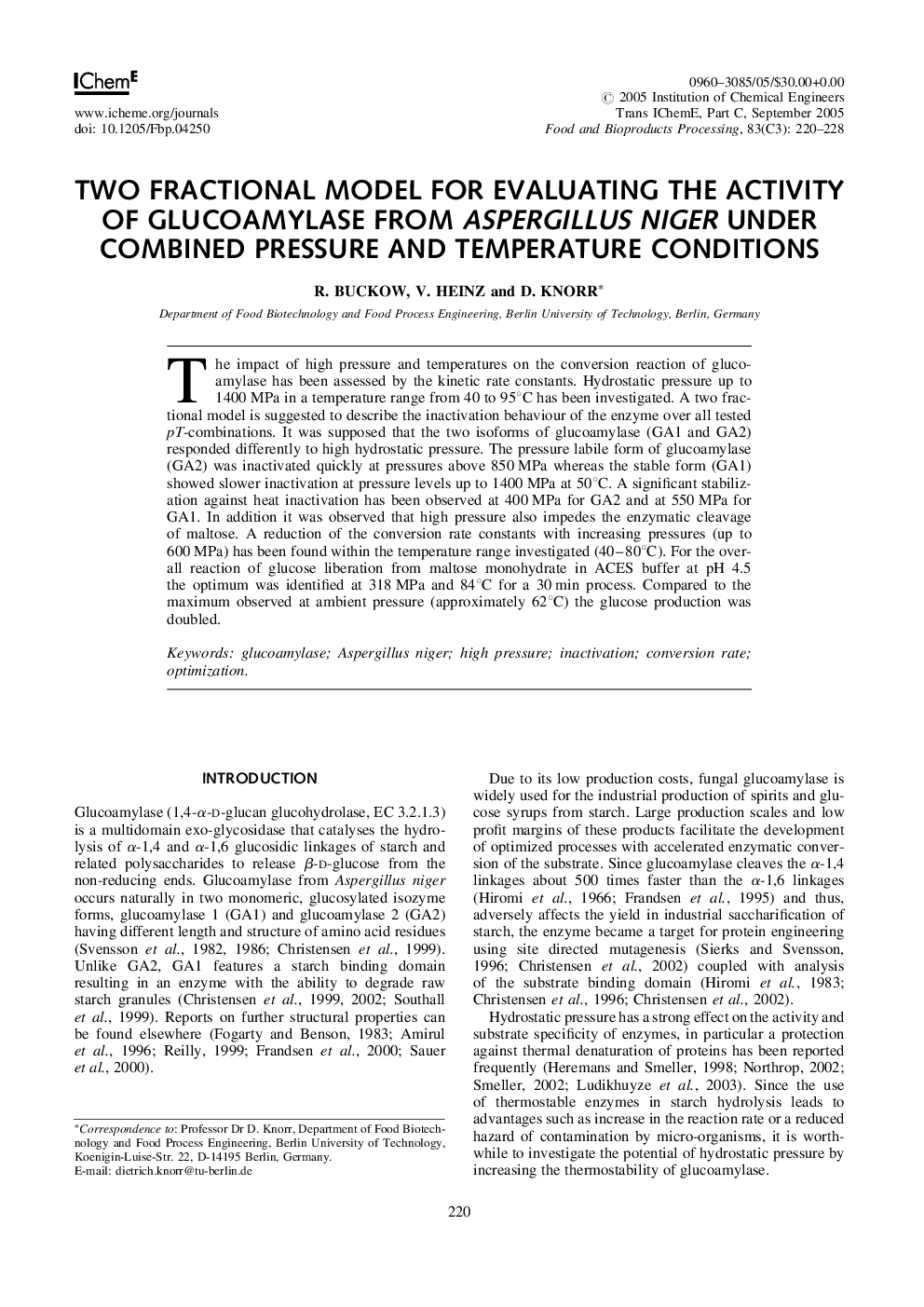| Article ID | Journal | Published Year | Pages | File Type |
|---|---|---|---|---|
| 10234471 | Food and Bioproducts Processing | 2005 | 9 Pages |
Abstract
The impact of high pressure and temperatures on the conversion reaction of gluco-amylase has been assessed by the kinetic rate constants. Hydrostatic pressure up to 1400 MPa in a temperature range from 40 to 958C has been investigated. A two fractional model is suggested to describe the inactivation behaviour of the enzyme over all tested pT-combinations. It was supposed that the two isoforms of glucoamylase (GA1 and GA2) responded differently to high hydrostatic pressure. The pressure labile form of glucoamylase (GA2) was inactivated quickly at pressures above 850 MPa whereas the stable form (GA1) showed slower inactivation at pressure levels up to 1400 MPa at 508C. A significant stabilization against heat inactivation has been observed at 400 MPa for GA2 and at 550 MPa for GA1. In addition it was observed that high pressure also impedes the enzymatic cleavage of maltose. A reduction of the conversion rate constants with increasing pressures (up to 600 MPa) has been found within the temperature range investigated (40-80°C). For the overall reaction of glucose liberation from maltose monohydrate in ACES buffer at pH 4.5 the optimum was identified at 318 MPa and 84°C for a 30 min process. Compared to the maximum observed at ambient pressure (approximately 62°C) the glucose production was doubled.
Related Topics
Physical Sciences and Engineering
Chemical Engineering
Bioengineering
Authors
R. Buckow, V. Heinz, D. Knorr,
